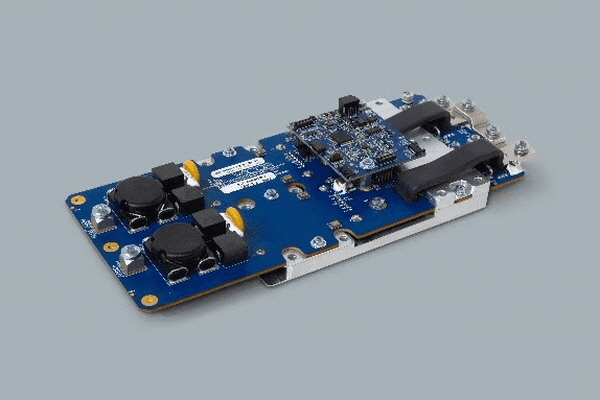혁신적인 고성능 전력 모듈 분야의 선도기업 바이코(Vicor)가 북미 최대의 자동차 기술 행사인 WCX™에서 5개의 세션에 걸쳐 발표를 진행하며, 최고의 효율성과 전력 밀도를 갖춘 전력 모듈로 자동차 전동화 문제를 해결할 수 있는 방안을 제시했다.
WCX에서 48V 영역 아키텍처 및 고전압 변환 솔루션 선
혁신적인 고성능 전력 모듈 분야의 선도기업 바이코(Vicor)가 최고의 효율성과 전력 밀도를 갖춘 전력 모듈로 자동차 전동화 문제를 해결할 수 있는 방안을 제시했다.
바이코는 북미 최대의 자동차 기술 행사인 WCX™에서 5개의 세션에 걸쳐 발표를 진행했다고 7일 밝혔다.
WCX™는 엔지니어링 커뮤니티에서 주최해, 전기 자동차의 대량 보급부터 자율 주행 차량의 개발 과정에서 자동차 업계가 맞닥뜨리는 주요 어려움과 자동차 산업에 영향을 미치는 국제 공급망 문제 등을 다루는 행사다.
바이코는 이번 WCX™에서 총 5개의 발표를 진행했다.
패트릭 코왈릭(Patrick Kowalyk) 바이코 북미 지역 자동차 분야 필드 애플리케이션 수석 엔지니어는 ‘기존 BEV 하드웨어를 이용한 고전압 사전 충전 해결’이라는 주제로 발표했다.
패트릭 코왈릭은 배터리 전기차의 전력 구성 요소를 활용해 저전압원에서 고전압 버스를 충전하는 방법을 제시하며, 전력 모듈에서 레귤레이터를 역방향 운전해 전압과 전류를 조정하는 방법에 대해 발표했다.
이어 데이비드 맥치즈니(David McChesney), 바이코 북미 지역 전략 어카운트 매니저는 ‘48V 세상에서 애프터마켓 부하가 맞닥뜨릴 불확실한 미래’라는 주제로 발표했다.
데이비드 맥치즈니는 오늘날의 대형 및 슈퍼듀티(Super-duty) 트럭의 12V 시스템은 고전력 부하를 감당하기 어려운데, 소비자가 차량을 효과적으로 활용하려면 이 문제를 반드시 해결해야 한다며 특히 12V 고전력부하를 48V로 변환하면 OEM과 애프터마켓 공급업체 간의 책임 문제가 줄어들 수 있다고 밝혔다.
이어 아키텍처 전환의 주도 문제, 트럭이 48V 아키텍처로 전환된 이후의 애프터마켓 공급업체의 대응 문제, 아키텍처 전환의 실현을 위한 대응 문제, 현재의 48V 아키텍처 전환의 지속과 미래를 위해 취할 조치 및 아키텍처 전환이 순조롭게 진행되기 위해서는 OEM과 애프터마켓 공급업체 모두 융통성과 확장성이 뛰어난 고전력 밀도 DC-DC 컨버터 모듈을 활용해야 한다고 설명했다.
다음으로 패트릭 와든(Patrick Wadden), 자동차 사업부 글로벌 부사장은 ‘높은 효율, 전력 밀도, 시스템 비용 효용을 보장하는 48V로 전환’이라는 주제로 발표했다.
패트릭 와든은 최고 전력 밀도의 컨버터를 사용해 800V를 48V로 변환하는 실용적인 방법을 소개했다.
바이코는 컴팩트한 사이즈에도 불구하고 고전압을 특별저압(SELV(Safety Extra Low Voltage))으로 변환할 수 있는 고정 비율 버스 컨버터 모듈을 시연했다.
이외에 액티브 서스펜션(active suspension), 스티어 바이 와이어(steer by wire), 브레이크 바이 와이어(brake by wire) 등 고전력 자동차 부하를 48V로 변환하는 방법이나 테슬라의 전체 전력 공급 네트워크 변환 방법에 대한 정보도 다뤘다.
이외에도 최고의 효율성과 전력 밀도를 자랑하는 자동차 산업용 최첨단 전력 솔루션에 대한 정보를 제공했다.
다음으로 니콜라 로사노(Nicola Rosano), 바이코 EMEA 전략 시스템 담당 수석 엔지니어는 ‘1.3MHz 이상의 스위칭 주파수를 통해 고전압 변환 시 EM 전도성 방출 규정 준수’라는 주제로 발표했다.
니콜라 로사노는 “EMI를 완화하려면 정밀 필터링 및 차폐 기술을 적용해야 하는데, 이는 설계 복잡성 및 비용 증가를 초래한다”며 “지나친 필터링은 효율성을 저해할 가능성이 있기에 컨버터 성능 저하 없이 효과적으로 EMI를 억제하려면 섬세한 균형이 필요하다. 고주파수 DC-DC 컨버터가 사용되는 환경에서 엄격한 EMI 기준을 충족하는 견고한 시스템을 개발하려면 복잡한 트레이드 오프(trade-off)가 필요하다”고 밝혔다.
다음으로 최연규 바이코 APAC 수석 필드 애플리케이션 엔지니어(이사)가 ‘BEV 배터리 팩 내부에 고전압을 유지하는 48V 영역 아키텍처 설계’에 대해 발표했다.
최연규 이사는 “대체로 BEV는 이중 레이어 전력 구조를 가지고 있으나, OEM이 영역 아키텍처를 적용하면 48V 전력을 포함하는 추가의 삼중 레이어 전력이 필요하다. 대부분의 차량 내 DC-DC 컨버터는 표준 전력 변환 능력을 보유했기에 차량에 하나 이상의 DC-DC 컨버터를 추가하면 손쉽게 전력 수요 증가에 대응할 수 있다. 하지만 이 과정에서 DC-DC 컨버터 및 와이어 하네스의 용량 문제가 남아있다”고 언급했다.
이외에도 바이코는 WCX에서 전력 시스템 설계 시 전력 모듈로 인한 차이를 보여주기 위해 자사 부스에 다양한 전력 시스템을 설치해 시연했다.
